Lou Ferrucci
Director, Data Innovation
SpinSys
Unleashing the Power of Standardization in Health IT:
The OMOP Common Data Model Leveraging the MDACA Data Fabric Suite
The modern healthcare landscape is remarkably data-driven. With a massive influx of patient data from various sources, the need for an organized, standardized system to streamline data management and analysis is crucial. This is where the Observational Medical Outcomes Partnership (OMOP) Common Data Model (CDM) comes into play. This groundbreaking approach to healthcare data standardization presents a paradigm shift, offering unprecedented systems interoperability and enhancing the efficiency and accuracy of healthcare delivery.
Tracey Smith, PMP
Healthcare Interoperability Project Manager
SpinSys
Understanding the OMOP Common Data Model
The OMOP CDM is a robust, open-community-driven data standard that provides a common language and structure to disparate healthcare data. Governed by Observational Health Data Sciences and Informatics (OHDSI), the model converts healthcare data from various sources, including electronic health records (EHRs), claims databases, and registries into a standard CDM format to provide semantic consistency and facilitate interoperability.
The value of using such a standardized model is enormous. It eliminates the ‘apples-to-oranges’ problem that researchers often face when comparing data from different healthcare settings. With the OMOP CDM, heterogeneous data sets become homogenized and interoperable, allowing researchers to extract meaningful insights more effectively.
Systems Interoperability and the OMOP CDM
Systems interoperability is a fundamental pillar in today’s data-rich healthcare industry. As clinical data sources become increasingly diverse, the ability to exchange and use information efficiently becomes a necessity.
The OMOP CDM fosters systems interoperability by transforming diverse healthcare data into a uniform structure. By standardizing terminologies, data formats, and structures, it ensures that all data entries speak the ‘same language’. This increases data portability and fluidity, allowing seamless data exchange and communication across different systems.
Moreover, the model’s interoperability facilitates large-scale, multi-site studies, enhancing the depth and breadth of healthcare research. It enables researchers and front-line health professionals to leverage vast amounts of data across different healthcare providers and geographies, driving insights that contribute to improved patient outcomes.
Leveraging OMOP CDM: Best Practices
When implementing the OMOP CDM, organizations should keep a few best practices in mind:
- Begin with the end in mind: Before implementing the OMOP CDM, have a clear vision of what you want to achieve. Understanding your organization’s specific needs can guide the implementation process and ensure it aligns with your goals.
- Engage cross-functional teams: The OMOP CDM impacts various organizational functions, from IT to research and clinical care. including representatives from these functions in the implementation process is critical for success across the enterprise.
- Adopt an iterative approach: Implementing the OMOP CDM is not a one-time event. It requires continuous iteration and refinement as more data sources are included, OHDSI standard vocabularies are updated and/or remapped, and as the organization’s needs evolve.
- Invest in training: To fully leverage the OMOP CDM, organizations need individuals who understand how to use it. Invest in comprehensive training programs to build these competencies within your team.
Challenges and Solutions
While the benefits of the OMOP CDM are substantial, organizations may face a few challenges during its implementation:
- Data quality and integrity: Ensuring data quality and integrity is a common challenge when converting data to the OMOP CDM. Organizations must establish robust validation and auditing processes to maintain data quality.
- Technological infrastructure: The OMOP CDM demands a sophisticated technological infrastructure capable of handling large-scale data conversion and analysis. Investing in the right infrastructure is essential to maximize the benefits of the CDM for the near-term and in the long run.
- Change management: Adopting the OMOP CDM involves significant changes in how an organization manages and uses data. A well-planned change management strategy can facilitate this transition, ensuring stakeholder buy-in and minimizing disruption to ongoing operations.
While the OMOP CDM offers several benefits, its successful implementation depends on effective data integration, transformation, and management. Enterprise tools like Talend and Informatica play a crucial role in this process by offering powerful data integration and management capabilities that facilitate the creation and management of the OMOP CDM.
MDACA Data Fabric Suite and OMOP CDM
The MDACA Data Fabric Suite, a leading data integration tool, aids in OMOP CDM implementation by providing robust data integration, quality control, and management capabilities. MDACA can connect to a broad range of data sources, making it an ideal tool for transforming disparate healthcare data into the OMOP CDM format.
One of the key features of the MDACA Data Fabric Suite is its data profiling capabilities, which allow organizations to assess the quality of their data before transforming it into the OMOP CDM format. This ensures that only accurate, high-quality data is included in the model.
The MDACA Data Fabric Suite’s graphical, drag-and-drop interface simplifies the Extract, Transform, Load (ETL) process, making it easier for organizations to map their data to the OMOP CDM. This saves time and reduces the complexity of data conversion, making it feasible for healthcare organizations of all sizes to unleash the power of standardization.
The metadata-driven approach of the MDACA Data Fabric Suite creates a “data map” that provides an overview of the data’s structure and semantics. This data map can be used to design the transformation process from the original/source data format to the OMOP CDM, making the process more transparent and manageable.
The MDACA Data Fabric Suite also offers data quality management and data governance tools, which help maintain data integrity and quality within the OMOP CDM. These features, coupled with its robust ETL capabilities, make MDACA a powerful tool for healthcare organizations implementing the OMOP CDM
Conclusion
In conclusion, the OMOP CDM, supported by enterprise tools such as MDACA, is ushering in a new era of healthcare data management and research. These tools simplify the complex process of transforming diverse healthcare data into a standardized format, making the OMOP CDM a more achievable goal for healthcare organizations. They play a pivotal role in implementing the OMOP CDM by offering powerful data integration, transformation, and quality management capabilities.
By standardizing data and fostering interoperability, the OMOP CDM brings us one step closer to achieving a truly data-driven healthcare industry. Tools such as MDACA help ensure implementation of the OMOP CDM is effective, reliable, and capable of delivering the immense benefits that the model promises.
Through careful implementation and continuous refinement, healthcare organizations can unlock the full potential of this powerful tool. In doing so, they pave the way for transformative changes in patient care and health outcomes, showcasing the power and potential of data standardization in health IT.





